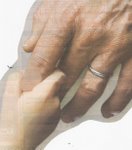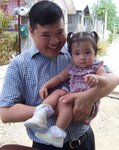https://www.medicalnewstoday.com/articles/asian-american-mental-health
Asian
American mental health stigma: Why does it exist?
By Jennifer Hulzen (2021 Jan 29), medically reviewed by Jacquelyn Johnson,
PsyD
·
Summary
Mental health stigma can negatively
impact people with mental illness, their loved ones, and caregivers. Stigmas
are unfair, inaccurate ideas or beliefs that people use to negatively isolate
and discriminate against others with certain traits or qualities.
Mental health stigmas exist
worldwide and can impact anyone of any race or ethnicity, creating barriers to
access available mental health treatment. According to Mental Health America (MHA),
Asian Americans are the least likely racial group in the United States to seek
mental health services.
This article discusses Asian
American mental health statistics, common stigmas and why they occur, cultural
influencing factors that impact different groups of people, how to combat
stigmas, and how to seek help.
Share on Pinterestelectravk/Getty
Images
The Asian American population is the
fastest-growing ethnic or racial grouping in the U.S., increasing 72% between
2000–2015.
In 2019, over 19 million people living in the United
States identify as Asian American or Pacific Islander, representing 6.1% of the total
U.S. population.
Of these, roughly 15% report having
a mental illness in the past year, meaning more than 2.9 million Asian
Americans experienced mental illness in 2019.
Findings from the National Latino
and Asian American Study also found that 17.3% of Asian
Americans will be diagnosed with a psychiatric condition at some point in their
lifetime.
By some estimates, Asian Americans
are three times less likely to seek treatment or help than other racial groups
in the U.S. The MHA also state that
they are the least likely racial group in the U.S. to seek mental health
services.
Why is there a stigma around mental health?
The APA claim stigma may play an
important role in someone’s likelihood to access care willingly. And according
to the Substance Abuse and Mental Health
Services Administration, mental health stigmas are common in Latino
and Hispanic communities in the U.S.
While more research is necessary,
mental health stigmas may exist for several reasons, such the below:
Fear of disability
A study found stigmas
that associate mental illness with disability are the largest barrier to Asian
Americans accessing mental healthcare.
Cultural norms and values
Shaming related to mental health is
a cultural norm in some Asian American communities.
Many Asian Americans also have strong family obligations that
center around traditional and cultural values. Ancient Asian philosophical
traditions strongly identify someone’s self-value with their ability to care
for their family and community.
These notions encourage the idea
that people with mental illness, who may not live up to these stereotypes,
obligations, and values, are failures, valueless, or have no identity or
purpose.
These negative ideas can also
discourage people from seeking treatment to avoid shaming themselves, their
family, or their community.
Getting outside help may also
conflict with the Asian American cultural value of interdependence, which
stresses that family or community can meet all a person’s needs. This value
perpetuates the idea that people should not seek professional help when relying
on their family or community.
The ‘model minority’ myth
The model minority myth enforces
the idea that all Asian Americans are fully-integrated, intelligent,
industrious, and have overcome racial bias. This places pressure on those
within this group to meet these standards or expectations.
Furthermore, it encourages people to
hide their historical influences and deny the fact that their life includes
frustration, let-downs, setbacks, failures, pain, and loss that everyone
experiences. Media portrayals often further encourage this stereotype by
presenting one-dimensional, uncomplicated, and “universal” Asian American
characters.
Taboos
Talking about mental health is taboo in many Asian
cultures, perpetuating the idea that mental illness is shameful and that people
should keep these issues private.
Lack of mental health education
A lack of mental health awareness,
coupled with negative stereotypes,may cause Asian Americans to overlook,
reject, deny, or ignore mental health symptoms.
They may also be more likely to
assume mental illness is related to poor parenting or a genetic flaw passed
down from parents. This can discourage people with mental illness, or their
families, from seeking outside help to avoid being labeled as defective or
damaged.
Religious or spiritual beliefs
Several prevalent religions in Asian
American countries promote the idea that mental illness:
- is a sin or divine punishment
- represents disrupted energy flow or an internal
imbalance
- stems from a lack of faith
- can be cured with enough faith, prayer, or good
behavior
Lack of culturally appropriate
resources
Many healthcare professionals do not
have the specialist training to accommodate or address different cultural
needs, experiences, and values.
Some estimates claim Asian Americans also have
the most trouble accessing mental healthcare due to language barriers of all
ethnic and racial groups living in the U.S.
Because fewer Asian Americans seek
mental healthcare than other groups, those who do may find themselves in
settings without people of their race or ethnicity to whom they can relate.
These factors may make it seem like mental healthcare services are not meant to
be used by Asian Americans.
Learn more about mental health stigma here.
Various mental health stigmas impact
certain groups of Asian Americans differently depending on certain cultural
factors.
Factors influencing stigmas in
children include:
- being pressured to excel in academic life and become a
highly skilled professional regardless of the emotional, social, or
physical toll
- being encouraged to hide emotions to avoid being seen
as “too emotional” or a complainer
- the idea that previous generations suffered worse
circumstances or trauma, so it is shameful for children or young adults to
share their struggles knowing that others survived “much more”
- the idea among older adults that mental illness does
not exist or impacts their community
- the idea that children and young adults should be
thankful or grateful because of the sacrifices made for them regardless of
their experiences
A study by the
National Asian Women’s Health Organization also identified the following
attitudes or beliefs impacting Asian American women:
- conflicting cultural values causing a reduced sense of
control over life decisions
- feeling responsible or obliged, yet unable to meet
unrealistic, biased family and societal standards
- fear of stigma and stigmatization of their family
- witnessing mental illness, such as depression in family
members, but being encouraged to stay silent
Some factors surrounding
traditional masculine gender roles and obligations may also influence Asian
American males more heavily than other groups, such as:
- intense shame and guilt for failing to be the “head” of
the family and care for family members
- the idea that Asian American men are less interested in
their emotional life
- fear of being labeled as easily defeated or willing to
accept failure
- the idea men should not “show their cards” or express
their emotions with others
- the need to “save face” by avoiding discussing issues
that may bring humiliation, shame, or disgrace
The best way to combat stigmas is to
become educated about mental health facts and engage positively with people who
experience mental illness.
Other ways to combat stigmas include:
- talking openly with family, friends, or using social
media
- promoting the idea that physical and mental illness are
equal
- avoiding the use of language that may be negative or
discriminating
- telling the media when they are promoting stigmatizing
content or ideas
- showing compassion and empathy for people with mental illness
- seeking treatment and being open and honest with others
about it
- trying to avoid self-stigmatization and embracing
empowerment over shame
- committing to being StigmaFree
When choosing a healthcare provider,
make sure they are culturally competent and fluent in the relevant language.
Ask if a provider has:
- treated many Asian Americans or Pacific Islanders
- specialized training in how to treat Asian Americans or
Pacific Islanders
- knowledge of how cultural backgrounds may influence
communication about treatment
- considered how aspects of cultural identity may affect
treatment
For more tips on how to choose an
appropriate mental healthcare provider, click here.
Visit Mental Health America or The National Alliance on Mental
Illness for a list of resources and organizations dedicated to
improving mental healthcare for Asian Americans and Pacific Islanders.
Negative mental health stigmas may
impact Asian Americans more than other racial or ethnic groups living in the
U.S., likely due to negative stigmas.
Education is the best way to combat
mental health stigmas. People with mental illness may also benefit from being
treated by a culturally competent healthcare professional.



















